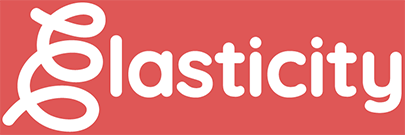Three decades before the first banner ad appeared online, a brilliant and semi-insane Canadian media theorist named Marshall McLuhan coined a phrase that would forever change the way we think about information:
The medium is the message.
McLuhan knew that the context of a message is of equal, if not more, importance than the message itself. At the time of his writing, people didn’t process television the same way they processed books. The principle endures today: we don’t process a tweet the same way we process an email. <
This might sound like something that would make you fall asleep in a lecture hall, but if you dust off McLuhan’s academic jargon, you’ll see that he stumbled upon a framework that can help advertisers (or anybody with something to say) cut through the clutter with their messages.
Let me explain.
We have preconceptions about every piece of content we encounter and we process them using an existing frame of reference. Many of us are immune to billboards and mentally allergic to display ads. But we can disrupt those preconceptions by rethinking those media are utilized. In short, we shouldn’t just use the medium to tell the message; we should converge the medium the message.
Here are a couple of examples:
Billboards as Maps
This is arguably the most boring McDonald’s billboard of all time—as bland as the paper bag those burgers are sold in:

Now, here’s a series of billboards that is arguably McDonald’s most innovative outdoor advertising campaign in the brand’s history:



The “Follow the Arches” campaign cropped the iconic golden “M” into turn-by-turn directions to help drivers find the nearest McDonald’s.
“To create a new wayfinding system, we noticed that the directions were right there in the logo,” said a brand spokesperson. “By cropping the Golden Arches into a directional path, and reducing the visuals to only what’s essential, we transformed an underutilized media space into a simple unified design system adaptable to any market around the world.”
McDonalds didn’t use billboards to tell their message—they used them as part of the message.
A Crosswalk Becomes an Ad
While McDonald’s reconsidered how it could use an already-established medium, Mr. Clean literally created its own advertising medium with its iconic crosswalk ad.

I mentioned earlier that we have deep-seated preconceptions about the visuals and information we process. As you can see, Mr. Clean successfully shattered pedestrians’ preconceptions of what a crosswalk was supposed with a simple paint job.
Can you measure this ad’s conversion rate? No. Can you demonstrate its ROI in a fancy PowerPoint presentation? No. Did it disrupt thought patterns by merging the medium and the message? You bet.
Plenty of progressive marketers have declared war on “outdated” or “immeasurable” advertising strategies. But before you follow their lead and start double-fist the latest ad-tech Kool-Aid, you should tell them to take notes from Marshall McLuhan.



